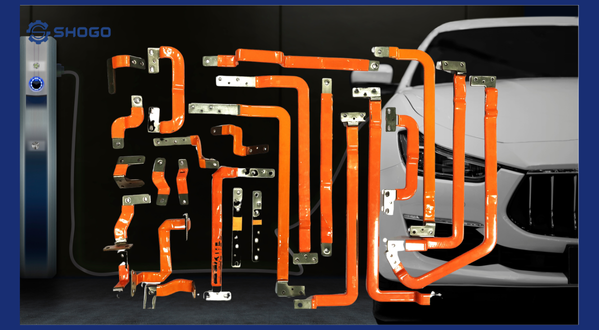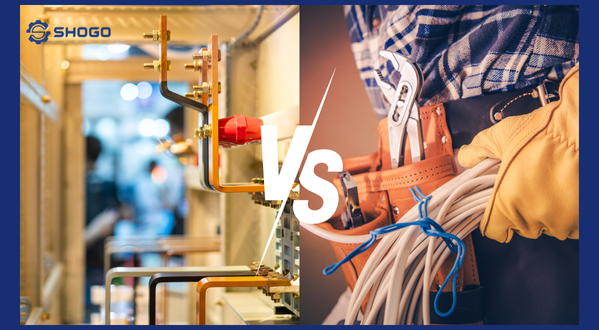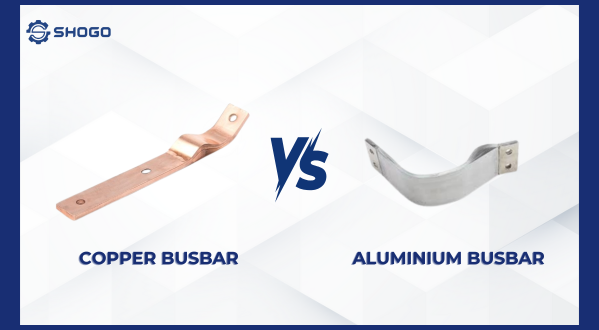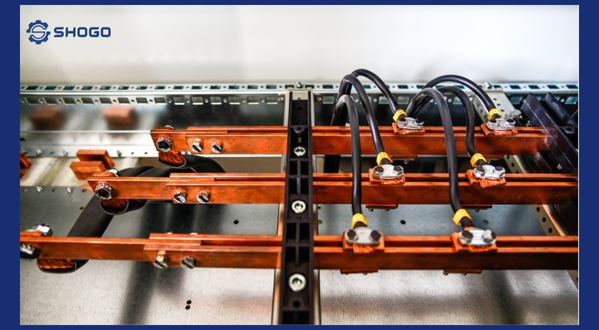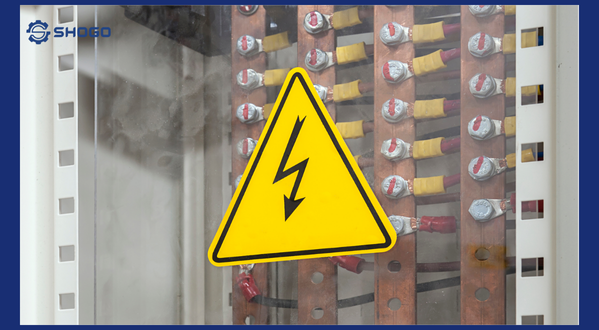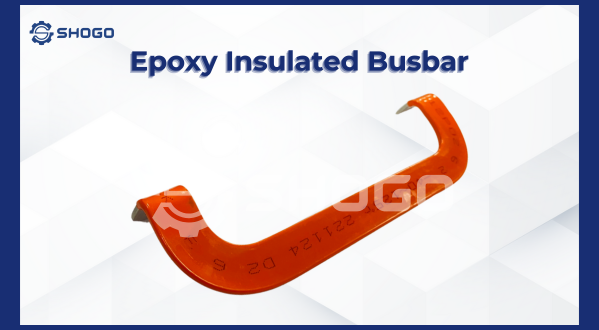1. What is a Flexible Aluminium Busbar?
Flexible aluminium busbar is a type of aluminum profile specifically designed to be easily bent and shaped. This type of aluminum bar is usually made from a highly ductile aluminum alloy, such as 6063 or 6061 aluminum. Thanks to its versatility, flexible aluminum bar can be used to create a variety of designs and structures, suitable for many applications.
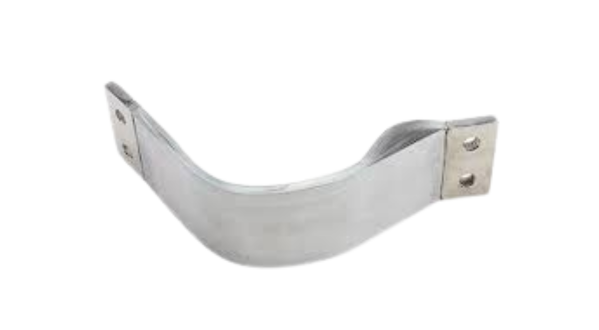
2. Structure of Flexible Aluminum Busbar
Flexible aluminium busbar are made up of many different parts, including:
2.1. Aluminum core:
The aluminium core is the main part of the busbar, made from aluminum alloy with high conductivity and good load capacity. Some commonly used aluminum alloys for flexible aluminum busbars include 6061, 6063, 6101, etc.
The aluminum core can be reinforced with steel or carbon fibers to increase stiffness and load-bearing capacity.
2.2. Insulation:
The insulating layer wraps around the aluminum core to isolate electric current and protect users from the risk of electric shock.
Commonly used materials for the insulation of flexible aluminum busbars include:
- Ethylene propylene rubber (EPR): Has good heat and chemical resistance, is flexible and easy to apply.
- Synthetic rubber (Chloroprene rubber – CR): Has good fire resistance and can withstand harsh environments.
- Thermoplastic elastomers – TPE: High flexibility, easy to shape and construct.
2.3. Protective cover:
The protective cover is made from materials such as PVC, metal or composite to protect the busbar from the effects of external environments such as dirt, water, chemicals, etc.
Protective covers can also help increase the impact resistance and fire resistance of the busbar.
2.4. Accessory:
Flexible aluminium busbar often come with accessories such as:
- Connector: Helps connect the busbar to other electrical equipment.
- Bracket: Helps fix the busbar on the wall or ceiling.
- Clamping part: Helps fix electric cables to the busbar.
3. Classification of Flexible Aluminum Busbar
Flexible aluminium busbar are classified according to many different criteria, including:
3.1. Structure:
- Solid aluminum busbar: This type is made from a monolithic solid aluminum bar, has high rigidity and good load bearing. However, solid aluminum busbars have low flexibility and are difficult to install in narrow spaces.
- Perforated aluminum busbar: This type is made from an aluminum bar with perforations along its length. These holes help reduce bus bar weight and increase flexibility. Perforated aluminum busbars are often used in applications that require the installation of many power lines.
- Aluminum mesh busbar: This type is made from aluminum bars interwoven to form a mesh shape. Aluminum mesh busbar has the lightest weight and highest flexibility. However, this type has a lower load capacity than other types of aluminum bus bars.
3.2. Material:
- 6061 aluminum busbar: This is the most common type of aluminum busbar used in electrical applications. Aluminum 6061 has high strength, good corrosion resistance and is easy to machine.
- 6063 aluminum busbar: This type has higher ductility than 6061 aluminum, so it is easier to bend and install in narrow spaces. However, 6063 aluminum has lower durability than 6061 aluminum.
- 5052 aluminum busbar: This type is cheaper than 6061 and 6063 aluminum. However, 5052 aluminum has lower durability and less corrosion resistance.
3.3. Application:
- Aluminum busbar for electrical cabinets: This type is used to distribute electricity in electrical cabinets. Aluminum busbars for electrical cabinets are often small in size and can be installed in narrow spaces.
- Aluminum busbars for factories: This type is used to distribute electricity in factories. Aluminum bus bars for factories are often large in size and can withstand high loads.
- Aluminum busbar for substation: This type is used to distribute electricity in the substation. Aluminum busbars for transformer stations are often very large in size and can withstand very high loads.
In addition Flexible aluminium busbar can also be classified according to other criteria such as:
- Dimensions: Length, width and thickness of the busbar.
- Number of cores: Number of conductive cores in the busbar.
- Insulation type: The way the dielectric is used to insulate the busbar.
4. Advantage of Flexible Aluminum Busbar
Compared to traditional copper busbars, Flexible aluminium busbar offer many advantages, including:
- Light weight: Aluminum is significantly lighter than copper, helping to reduce the load on the project and making it easier to transport and install.
- Lower cost: Aluminum is cheaper than copper, so flexible aluminum busbars are also cheaper.
- High electrical conductivity: Aluminum has good electrical conductivity, only slightly lower than copper.
- Corrosion resistance: Aluminum has high corrosion resistance, suitable for harsh environments.
- Ease of machining: Aluminum is easier to machine and shape than copper, allowing for more complex and flexible designs.
- Durability: Flexible aluminum busbars are highly durable and can withstand heavy loads.
- Environmentally friendly: Aluminum is a recyclable material,
5. Application of Flexible Aluminum Busbar
Thanks to the above advantages, Flexible Aluminium Busbar are increasingly popular in many different fields
Power distribution:
- Flexible aluminum busbars are widely used in electrical cabinets, substations and factories for high and low voltage distribution.
- The flexibility of flexible aluminum busbars makes it easy to install and position in tight spaces or with complex shapes.
- Compared with traditional copper busbars, flexible aluminum busbars are lighter and more cost-effective.
Connecting electrical equipment:
- Flexible aluminum busbars are used to connect high-current electrical equipment such as transformers, electric motors and circuit breakers.
- The good electrical conductivity and high durability of the flexible aluminum busbar ensure safe and reliable connections.
Application in electric vehicles:
- Flexible aluminum busbars are used in electric vehicles to connect batteries, motors and other electrical components.
- The flexible aluminum busbar’s ability to withstand vibration and impact well helps ensure the safe and efficient operation of electric vehicles.
Applications in industry:
- Flexible aluminum busbars are used in industries such as mining, paper processing and textiles to supply power to equipment and machinery.
- The good water and chemical resistance of flexible aluminum busbars makes it suitable for harsh industrial environments.
Other applications:
- Flexible aluminum busbars are used in solar power systems, energy storage systems and other electrical applications.
In addition to the above applications, flexible aluminum busbars can also be used for many different purposes depending on the specific needs of the user.
6. Some notes when using Flexible Aluminum Busbar
Select:
- Size: Choose a busbar with a size appropriate to your current and voltage needs.
- Material: Choose busbars made from high quality aluminum, with good electrical conductivity and corrosion resistance.
- Length: Choose a busbar with a length suitable for the installation location.
- Accessories: Choose suitable accessories such as connectors, clamps, etc.
Installation:
- Clean: Clean the installation location to ensure a good connection.
- Fixing: Fix the busbar firmly with the included accessories.
- Connection: Connect the busbar to electrical equipment using suitable connectors.
- Protection: Protects the busbar from harmful agents such as chemicals, high temperatures, etc.
Use:
- Avoid overloading: Do not use a busbar that is overloaded compared to its load capacity.
- Periodic inspection: Check the busbar periodically to ensure it is working properly and is not damaged.
- Repair: If the busbar is damaged, it should be repaired or replaced immediately.
In addition, the following points should be noted:
- Flexible aluminum busbars can be bent, but should not be bent excessively as this may damage the busbar.
- When bending the busbar, use appropriate tools to avoid damaging the busbar.
- Flexible aluminum busbars can be cut, but proper tools must be used to ensure precise cuts and no damage to the busbar.
- When cutting bus bars, wear safety glasses and gloves to avoid injury.
Note: These are just general notes when using flexible aluminum busbars. You should read the manufacturer’s instructions carefully before using the product.
7. Conclusion
Flexible Aluminium Busbar are the perfect solution for electrical systems, bringing many outstanding advantages compared to traditional busbars. With flexibility, high electrical conductivity, safety and durability, flexible aluminum busbars are being widely used in many different fields.






